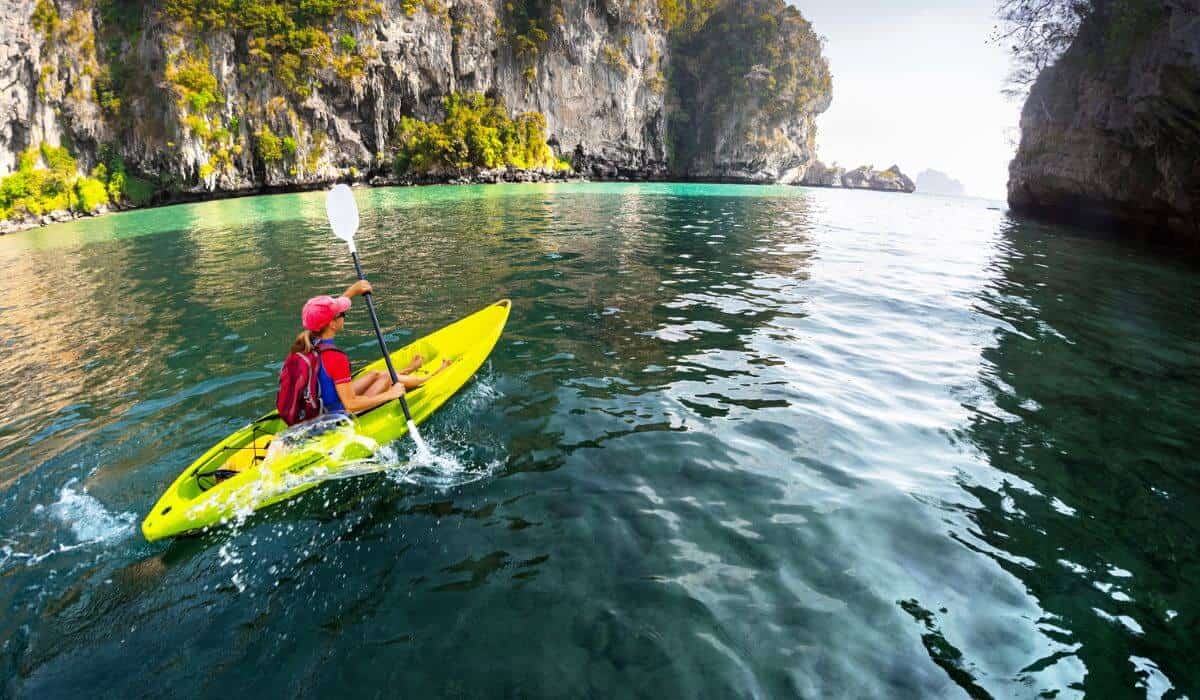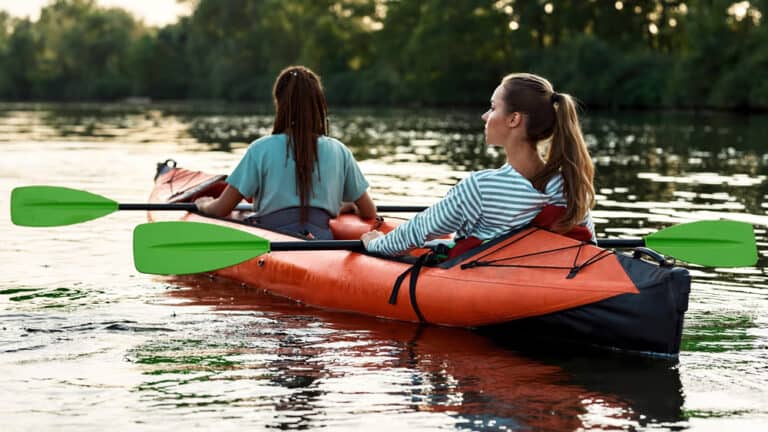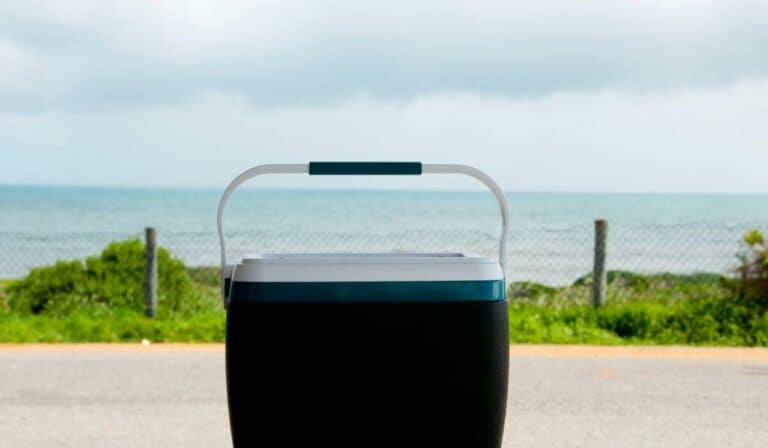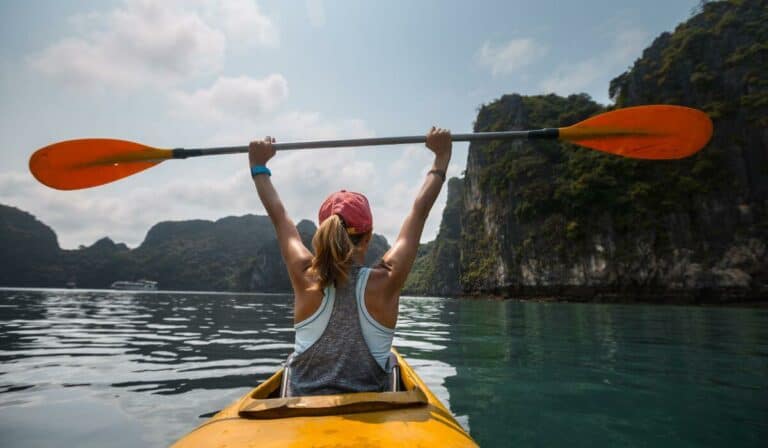What To Know Before Buying a Kayak: Key Factors
If you’re looking to explore the world of kayaking, it’s essential to know what to consider before buying a kayak. Selecting the correct kayak can be an overwhelming undertaking with a variety of alternatives available. To make the decision easier, this blog post will provide an overview of key factors to consider when choosing a kayak, such as budget constraints, types of models available, skill level, and size/weight capacity.
By understanding your budget constraints, researching different types of kayaks such as sit-in or sit-on-top models, and determining your skill level as a paddler, you’ll be well on your way toward finding the perfect kayak for your needs. Additionally, considering size and weight capacity is crucial in ensuring both comfort and safety during use.
Lastly, thinking about accessories like paddles or kayak fishing gear can enhance your overall experience while out on the water. Read on to learn more about what to know before buying a kayak and how these considerations will ultimately lead you toward making an informed purchase.
Table of Contents
Consider Your Budget

When it comes to purchasing a kayak, budget is an important factor to consider. The kind of kayak you go for and the extra items that come with it can be a major factor in your overall outlay. Prior to committing, set aside some time to examine the various kayak varieties and decide on a budget.
Sit-in kayaks tend to be more expensive than sit-on-top models, but they provide greater stability in choppy waters. Touring kayaks are longer boats designed for long-distance paddling and feature large cockpits for added comfort. Recreational or fishing kayaks are shorter boats with rounded hulls that offer good stability in calm waters and plenty of room for storing fishing gear.
Advanced whitewater kayak models require experienced paddlers who know their way around rapids and fast-moving water currents. Sea Kayaking is also popular among experienced paddlers as these longer vessels provide superior tracking abilities when navigating open seas or larger bodies of water like lakes or bays.
Inflatable kayaks tend to be more affordable than hardshell models, but their lack of rigidity when inflated correctly can cause them to not track as well in choppy waters. When transporting these vessels from place to place, extra caution must be taken since any moisture seeping into the material used during construction can drastically affect performance levels over time if proper care is not exercised.
For recreational kayakers who are mainly fishing, it is beneficial to purchase a lighter vessel that provides sufficient space for tackle and gear while allowing greater agility. This will allow them easier maneuverability while still offering enough space inside the cockpit area where an angler can store their tackle box, rods, reels, and bait.
As far as paddles go, having one that fits your height is key; so make sure you measure yourself up before buying one. Otherwise, chances are you won’t enjoy your ride very much since a wrong-size paddle makes it difficult even for experienced paddlers to handle the vessel correctly without getting tired quickly after a few strokes.
Key Takeaway: When considering purchasing a kayak, it is important to research the different types and plan for the budget. Inflatable models tend to be more affordable than hard shells but may not track as well in choppy waters. For recreational kayak anglers, investing in lighter-weight boats with appropriate paddles will provide an optimal ride without becoming quickly fatigued from incorrect paddle size.
Research Different Types of Kayaks

The next factor is skill level – if this is your first time in a kayak, then something more basic like a recreational or sit-on-top would be best. Experienced paddlers may opt for something more advanced such as touring or sea kayaks which require more technical paddling skills and better control over speed and direction. For those who want to tackle whitewater rapids, specialized whitewater models are available too.
Size and weight capacity should also be taken into consideration when selecting a boat – longer boats tend to track better but they can also be harder to turn so shorter ones might suit beginners better; while larger cockpits provide extra room but have less storage space than smaller ones do. Inflatable models are great for portability since they pack down small enough that they can fit in most cars; however, their stability isn’t quite as good as hard shells so keep that in mind before making your decision.
Think about items to complement your boat, such as oars (which range from small to large), fishing supplies (if needed), and life jackets, depending on the activities you plan. A good paddle should feel comfortable in your hands while providing plenty of power; whereas fishing purposes might call for longer shafts with wider blades specifically designed for catching fish rather than speed or agility. Whatever type of boat you choose make sure it fits both your needs and budget.
Investigating the various varieties of kayaks accessible is essential to discovering one that meets your necessities. With this knowledge, you can then determine what skill level is required to use each type safely and effectively.
Key Takeaway: When shopping for a kayak, it’s essential to think about cost, proficiency level and size before settling on the ideal vessel. From recreational models for beginners to specialized whitewater boats for more experienced paddlers, there are plenty of options available that can fit any lifestyle – don’t forget accessories like life jackets or fishing gear too.
Determine Your Skill Level

When it comes to picking the ideal kayak, your proficiency is a key element. It is essential to comprehend which kayak will be most suitable for you since there are many distinct varieties accessible. Beginners and experienced kayakers alike should take into account the length, width, and weight capacity of their boat when selecting one that fits their skill level.
For the beginner or recreational paddlers who want an easy-to-maneuver vessel, sit-in or sit-on-top models are great options. Sit-in kayaks provide more protection from wind and waves while touring longer distances but they require a good paddle stroke technique in order to be effective. For fishing purposes, anglers may opt for wider recreational or fishing-specific models with larger cockpits which allow for easier entry and exit as well as space for storing gear like rods and tackle boxes.
Experienced paddlers looking to explore rougher waters may choose a longer sea or whitewater touring model with rounded hulls designed specifically for handling choppy conditions on lakes and rivers. These boats offer better tracking ability due to their increased length but can also be harder to maneuver than shorter designs; this is why advanced skills are necessary when operating them in rapids or large open bodies of water.
Inflatable kayaks can also make great choices depending on your experience level since they come in various sizes ranging from short recreational vessels up to long touring models suitable for ocean use. They are lightweight enough that even novice paddlers can easily transport them without needing assistance. Having the proper paddling skills along with a good paddle will help ensure you have safe adventures out on the water, no matter what type of craft you end up selecting.
It is important to understand your skill level when determining what type of kayak to purchase. Realizing your skill level is key in selecting the right kayak, which will help you make a knowledgeable decision and guarantee that it meets your requirements. Moving on, it is essential to consider size and weight capacity before purchasing a kayak as these factors can affect performance in different water conditions.
Key Takeaway: Choosing the right kayak is key to having a successful outdoor adventure, and experienced paddlers should select longer sea or whitewater touring models with rounded hulls designed for choppy conditions. Beginners may prefer shorter recreational vessels like a sit-in or sit-on-top models, while anglers might opt for wider fishing-specific designs. Inflatable kayaks can also be great options depending on skill level since they come in various sizes ranging from short to long tours.
Consider Size and Weight Capacity

When choosing a kayak, it is important to consider size and weight capacity. For recreational or touring, a sit-in kayak is typically the best option due to its length and ample cockpit space for entering/exiting. Sit-on-top kayaks are great for fishing purposes, as they can easily accommodate your fishing gear. If you’re an experienced kayaker looking for something more advanced, look into whitewater or sea kayaking which require paddling skills beyond those used on calm waters.
Ensure that the paddle you select is of a suitable size and shape to enable efficient, powerful movement through the water. You should also ensure that the paddle has a good blade shape so that it can efficiently move through the water with minimal effort from you while providing maximum power output.
If you’re new to paddling then shorter boats such as inflatable or recreational models will be easier to maneuver around obstacles in rivers or lakes, but if you want more speed then longer boats like touring ones may be better suited for your needs.
Inflatable models are lightweight making them easy to transport, however, some may not have enough stability when loaded up with gear so make sure yours does before purchasing. Additionally, rounded hulls provide greater tracking ability than flat-bottomed ones do, so keep this in mind when shopping around for a suitable model.
Consider the body size and water type when selecting a kayak that meets your size and weight capacity requirements. Moving on from there, think about accessories that will make your kayak experience more enjoyable.
Key Takeaway: When selecting a kayak, consider size and weight capacity; sit-in models are best for touring or recreational use while sit-on-top versions work well for fishing. Make sure to get the right paddle that fits your body type as well as the hull shape so you can navigate obstacles with ease and maximize power output.
Think About Accessories
When it comes to accessories for your kayak, there are a few things you should consider. For kayaks, the type of paddle and life jacket needed can vary based on the model. Sit-in touring and recreational kayaks usually require longer paddles than sit-on-top or whitewater models. Experienced kayakers often use shorter paddles for sea or fishing purposes, while beginners may benefit from a good paddle with more surface area that is easier to control.
For fishing gear, longer boats like touring and sea kayaks provide more room in the large cockpit as well as greater stability due to their rounded hulls – perfect for calm waters when casting off the sides of your boat. Recreational kayakers should look into inflatable models if they plan on taking them along with them on trips where space is limited. Shorter boats offer better maneuverability but less storage capacity overall so be sure to factor this into your decision when choosing a model.
No matter what kind of boat you’re using, it is important to invest in quality safety equipment such as life jackets and helmets if necessary. Additionally, it is essential to practice proper paddling skills before heading out onto open water; this will help ensure both your comfort and safety during any adventure.
FAQs About What to Know Before Buying a Kayak
What do you need to know when buying a kayak?
When selecting a kayak, think about the body of water you’ll be paddling in; different boats are made for various types of water. For rougher waters, whitewater or sea kayaks are a better choice than recreational ones.
Additionally, pay attention to size and weight capacity as well as hull material when selecting your boat. Lastly, take into account any additional accessories that may make paddling more comfortable such as a seat cushion or foot braces.
By taking all these factors into consideration before making your purchase you can ensure that your new vessel meets all of your needs and expectations.
What size kayak do I need for my height and weight?
The size of the kayak you need depends on your height and weight. For an individual in the 5’2″ to 6’0″ range, a recreational or touring kayak of at least 10 ft is suggested.
If you are over 6’ tall, then an 11-foot or longer boat would be more suitable. As far as weight capacity goes, the average adult should look for a boat with at least 250 lbs capacity while heavier individuals may require up to 400 lbs capacity in order to stay safe and comfortable while paddling.
For optimal safety and comfort, it is essential to select the right kayak size according to your specific requirements.
Conclusion
Before committing to a kayak, be sure to assess your own capabilities and familiarize yourself with the available models. Researching different types of kayaks and understanding your skill level is key to finding the right one for you. Consider size and weight capacity when selecting a model that fits both your needs and budget.
Don’t forget about accessories either; they can make or break an outdoor adventure. With a bit of research, you can confidently purchase the perfect kayak for your needs and budget – understanding all its features and accessories beforehand.
Discover the best kayak for your next outdoor adventure with SunWaterDirt.com‘s comprehensive guide on what to know before buying a kayak. Get informed and find the perfect fit today!







